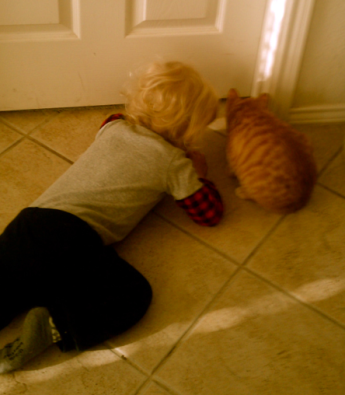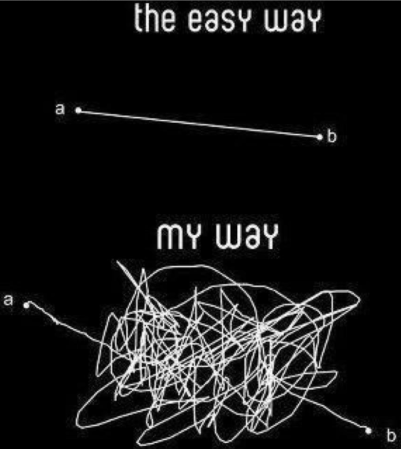The Dreaded Synopsis—How to Get Started & Why We Need One BEFORE Writing the Book

All righty, so last time we talked about the dreaded synopsis and covered why we need them and why they are important. Most writers wait until the book is finished to tackle the synopsis, but that isn’t an approach I would recommend. You don’t have to be a hard core plotter to gain massive benefits to writing a synopsis before ever writing page one.
I know all the pantsers groan when I mention any kind of pre-planning. You are squishing my creativity! Stifling my muse!
No. I am not. I am actually going to make you far more creative and I will prove it.
The Benefit of Boundaries

If I said to all of you. Write me a story and it is due next week, at least half of you? Your brains would vapor lock as you stared at a page.
What to write? So many ideas! How to choose?
But, if I said, I want a ten page story and it must involve a family, a circus and a stray dog, suddenly your imagination would bloom. I would get circuses in space, circuses at the turn of the century, love stories, war stories, horror stories, faith stories. Why? Because we have set some boundaries.
Want to make a toddler creative? Trap him in a playpen.

Think of your novel like a road trip. Simply picking where you want to end up helps immensely. If I refused to plan any of my trip because it would ruin my spontaneity, I could end up anywhere and no guarantee those places would be fun.
But, if I know I want to drive to L.A. (my end destination) then immediately certain highways are out of the question. If I am in Texas and want to end up in California, I-20 E is NOT an option.
Also, along the way, if I want to exit the highway to check out the World’s Largest Ball of Twine or Frank’s Best BBQ, I can, because I know that so long as I find any road leading back west, I am cool. Or, if I want to return to the main interstate at a farther point, that is easy too. I know I need some road running north-south to run me perpendicular to the interstate. So on this trip, my options are boundless because I always know where I want to end up.
Always remember. Boundaries help and…
Just because we create a synopsis doesn’t mean it is gospel.
Remember our road trip. We have innumerable options of how to get where we are going and it is okay to change things up.
Key Ingredients

But this is where new writers run into problems. All novels involve one core singular problem and the story is only over when that problem is resolved.
Novels are not a string of bad situations. Our protagonist has one major goal and our job is to define what that is. Once we have that singular driving goal, only then we can create dramatic tension.
So when we are writing a synopsis before or after writing a novel we need to be able to articulate the protagonist’s GOAL. If we can do that much? We are way ahead of most new writers. If we do the log-line before writing the novel, we can always adjust later. Here is the formula I use.
Interesting protagonist + Active Verb—->Goal + Stakes + Ticking Clock
We must have ALL these pieces or we do NOT have a story (yes, even for the literary folks).
If I write the story first and then write the log-line and it works? Yay! It will be easier to pitch an agent and write the synopsis. If the log-line doesn’t work, however, then I can tell exactly where and why the story is falling flat (and this is why I recommend doing this before writing the book). It is far easier to fix a 50 word log-line than revise 80,000 words and retrofit an active goal.
The Trouble with Finding Dori

The recent Pixar movie Finding Dori is a good example of what I am talking about. If the screenwriters had done a log-line and come to me? I would never have approved the screenplay and made them go back to the drawing board because some crucial pieces were missing.
But no one asks me…and that is why that movie sucked.
Yeah, yeah it had cute moments Pixar is famous for and a few laughs, but it was certainly NO Finding Nemo.
I rarely go to the theater but was willing to splurge to see the sequel to one of my all-time favorite movies. But as the movie unfolded, I found my mind wandering. I was tapping my foot and fidgeting because I was hopelessly bored.

As the movie progressed, I wanted to understand why this was such a different experience, so mentally I created a log-line and it was painfully clear why Finding Nemo was a classic and Finding Dori an utterly forgettable sequel. Cute, sure. Classic? No way.
Let’s take a look. Shall we?
Finding Nemo
A control-freak agoraphobic fish father (protagonist) must partner with a fish with short-term memory issues to travel across the ocean (active verb) and rescue his son (goal) before Nemo is killed by a fish-shaking brat (stakes/ticking clock).
Versus…
Finding Dori
A fish with short-term memory issues travels to find her family.
*head desk*
See, in the original movie Finding Nemo, every part of that log-line was PERFECT. Who is the worst character to travel across the ocean? A fish terrified of open water. Oh then partner a control freak with an ally with short-term memory issues just to make him scream. And here is the kicker. He must work with her or he won’t succeed.
Additionally, the creators used the core story problem to shove the protagonist into the ONE place he WILL NOT GO but now he will because his love for his son is stronger than his terror. We also worry because Marlin is the least likely candidate to be successful on such a mission.
How will he ever do it?
There is an active goal (a rescue) and they can’t take all day. As of Darla’s birthday? Nemo is dead and flushed.
The problems with Finding Dori are numerous.
First of all she has short-term memory loss, but this is really a weak surface problem. Dori has no trouble meeting new fish and joining in and she doesn’t remember anything long enough for getting lost to present much of a problem to her personally. Unlike Marlin’s white-knuckled finned terror of the open water and the horror of potentially losing his son? Dori’s “handicap” is meh.
But the bigger problem is she just one day remembers she has a family and decides pretty randomly that she wants to find them. Okay, but if she doesn’t find them, what is the cost? Nothing really. It might be a bummer, but Dori won’t remember it in five minutes so who cares?
I certainly didn’t.
There weren’t any stakes. Her parents are not in danger. There is no ticking clock early in the movie (though they lamely tried to insert one toward the end).
The movie was literally was one bad situation then another then another. I have never wanted a movie to be over so badly.
Log-Line as a Guide-Line for the Synopsis
Log-lines are simpler and far less painful to do than jumping right into a synopsis. I prefer to do them before writing and if you are going to attempt Nano? The log-line very literally can make the difference between finishing and fizzling.
If you have a story that isn’t working? No agent wants it? You can’t figure out how to fix it? Do a log-line. It is an amazing diagnostic tool that will save you a ton of time rearranging deck chairs on the Titanic.
Too many authors are reworking those first chapters, polishing the prose, adding description when all along the problem is there is no clear story goal or the stakes are too low or the timeline is not there or too loose.
Also, when it comes to writing that synopsis, it is far easier to build a 500 word synopsis off a 50 word log-line than it is to try and condense 90,000 words into 500. And, if no matter how hard you are trying you cannot get your story into a synopsis, the log-line will point out where your story is struggling and why that is manifesting in the synopsis.
If you want to do Nano, I am offering a class on log-lines and on synopses next week, so I strongly encourage you to consider joining up.
What are your thoughts? Other than you loved Finding Dori and I am a horrible person for not liking it



